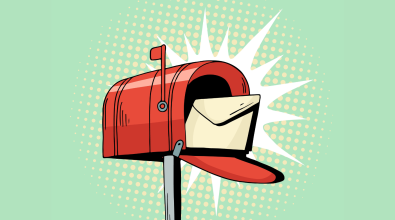How behavioral ‘nudges’ can reduce burnout among 911 dispatchers

Cities across the United States are struggling with a growing public safety problem that’s largely invisible to the public: a shortage of people willing to work high-stress jobs answering 911 emergency calls.
The problem is taking a toll on emergency operations, as short-staffed teams work overtime shifts in a scramble to make sure there’s enough dispatchers to answer calls. The turnover costs cities tens of thousands of dollars to recruit and train new people. It also comes at a high emotional cost for dispatchers, who handle traumatic situations every day without the widespread recognition — and often, better pay and benefits — given to police officers or firefighters.
Now there’s new research based on behavioral “nudging” that may help cities improve morale, and perhaps even reduce turnover, in their 911 centers. The Behavioral Insights Team partnered with nine U.S. cities to study a low-cost way of building camaraderie among 911 call operators. For six weeks, more than 200 dispatchers were asked to write down stories about their work experiences, as well as advice for new operators — and share those stories with each other. The experiment worked: Four months after the study, dispatchers who participated reported feeling less burned out, and the number of resignations dropped by more than half.
The nine cities that partnered on the study were: Albuquerque, N.M., Cambridge, Mass., Glendale, Ariz., Greensboro, N.C., Mesa, Ariz., Portland, Ore., Salt Lake City, Utah, Tempe, Ariz., and West Palm Beach, Fla. It built off of work these cities were doing with What Works Cities, a Bloomberg Philanthropies initiative to build the cities’ capacity to use data and evidence in decision making.
To find out more about the study and what it means for urban practitioners, Bloomberg Cities caught up with lead researcher and behavioral economist Elizabeth Linos. At the time of the study design, Linos worked with the Behavioral Insights Team; she’s now an assistant professor of public policy at the University of California at Berkeley, where she researches how the public sector can recruit a more diverse workforce, reduce burnout at work, and motivate employees.
Bloomberg Cities: Why was 911 operator burnout an issue you wanted to look at?
Elizabeth Linos: I had gotten calls from cities that were having an absenteeism problem among employees who run 911 dispatch or call centers. These are jobs that need to be manned 24/7. If you have high absenteeism, it essentially creates a vicious cycle where one person doesn’t show up, and then another person has to do mandatory overtime. So they’re working really long hours, which creates frustration, burnout, and ultimately turnover as people quit.
It turns out this is a much bigger challenge in the public sector than just at 911 dispatch centers. It’s an issue across-the-board for frontline workers that are in positions that face high levels of trauma — think of social workers or correctional officers. The turnover rates in the first couple of years of service are really high.
A lot of cities are trying to fix morale and trying to improve the work experience for 911 dispatchers. What they don’t have is an evidence base to help them. That’s what we’re hoping to create together.
What was the intervention you tested?
We put together a randomized control trial to try to test a potential intervention or potential program that would reduce burnout. It turned into a large collaboration of nine cities, all working together to try to answer this problem that seems to be widespread across the country.
The intervention was actually very low-cost and low-tech. We put together a series of emails that dispatchers would receive from their supervisors every week for six weeks. And the emails essentially asked people to do two things. They asked dispatchers to write out some advice to new rookies from their own experience — how they think about the job, how they think about what it means to be a good dispatcher or mentor. It also gave them an opportunity to read the advice other dispatchers across the nine cities were writing. The responses were completely confidential and anonymous.
Because we are behavioral scientists, the content of those emails and the language used to prompt people to participate was very specific. What we were trying to build is a sense that people who work in 911 dispatch centers have, and should have, a really strong sense of professional identity in the same way that cops or firefighters or nurses do. They can support each other to strengthen social connectedness between the dispatchers themselves. This is based on a lot of psychological evidence that suggests that if you feel like you belong and if you feel like you have social support, you’re less likely to be burned out and do well in your work.
What is the behavioral ‘nudge’ in this case?
The nudge intervention is everything that we put in the email. It was doing a couple of things. It was nudging people to write and reflect on their experience, and think of themselves as advice givers — which has some connotations about social status and importance. We were also nudging them to read other people’s stories.
[Read our explainer: What is a behavioral ‘nudge’?]
What stories did the dispatchers tell that jumped out at you and why?
We asked people to talk about an experience that really exemplified what it’s like to be a 911 dispatcher and do the job well. And someone sent in a story about one of their colleagues who handled a case where someone had called in but the sound was muffled and they couldn’t hear anything. As the call went on, they were able to figure out not only that this actually was a critical domestic violence situation, but also where it was happening. They dispatched a police vehicle, and the police officer showed up right in time: The abuser was right on top of this woman and was about to hit her. The dispatcher did all that based on very limited information and probably saved this woman’s life.
To me that was really striking. Not because I didn’t know that that’s what dispatchers do. But the clarity of mind you need — these are life and death situations.
It was also amazing how open and generous this community is. When we ask people what advice they’d give a rookie, they’d often write things like: “we’re here for you,” “you don’t have to suffer alone,” “we know what you’re going through,” “you belong here,” and “we can support you.” Elevating that generosity and inclusion and building it out is what this intervention was all about.
What was the result of these emails from supervisors and all this writing and reading by dispatchers?
We measured a couple of different things. First, we measured burnout in dispatchers using a validated scale, the Copenhagen Burnout Inventory. We measured it before the intervention, then immediately after the six weeks were done, and again four months later. So we have these three points.
What we find — and I have to say I was surprised by this — is that the largest effects are four months after the end of the intervention: We see an eight-point reduction in the burnout score. It’s difficult to put what that means into context, but suffice it to say that it’s a pretty significant change.
We also looked at the administrative records, to see how this translates into organizational outcomes. Four months after the intervention ended, we see a reduction by more than half in resignations — which is huge if you think about how much time we spend worrying about turnover.
We had a group that got these emails and a statistically identical group that didn’t. That helps us feel confident that what we see in terms of the outcomes we measured is due to this pilot program, and not due to any other factors.
What excites you about what you found here?
I’m really excited to learn more about how we can support public servants. This is an area in behavioral science, but also more broadly, that hasn’t gotten enough attention. Employee burnout isn’t just a 911 dispatcher problem, it applies across a whole host of frontline services. We know from previous research that people who are burned out are also less able to do their job well — so there are lots of potential linkages here to service delivery.
This is one of potentially many studies that are going to start chipping away at finding solutions to these challenges. What do you do about it when you can’t double people’s salary or decrease their job demands or take away the stress? The very nature of frontline work is stressful and traumatic and so there’s only so much you can do to change the nature of the job itself. What this study finds is that you can change the work environment in ways that are meaningful.
But we should be very careful about scaling up without some additional testing.This is the first study of its kind and we need a lot more research to really know what works.
So if I run a 911 dispatch center, what can I be doing with these insights right now?
If I were running a 911 dispatch center, I would read this research and I would think much more seriously about how I’m building social connectedness, belonging and inclusion at work. We haven’t really thought about burnout as an inclusion issue before. Oftentimes when you run a center, what people are asking for is more days off or more clarity about their work schedules or better equipment. All of that stuff is really important — it’s also very costly. And so this is one more potential lever to pull that people might not know to ask for, but seems to be incredibly important.
[Read: Reducing 911 dispatcher burnout through behavioral insights]
The second part has to do with being undervalued, and how the rest of law enforcement sees 911 dispatchers. What I find in my research is that if you feel like the community doesn’t really understand what you do, and you feel that police officers don’t really understand what you do, you’re likely to have much higher levels of burnout. That suggests a whole host of potential solutions that have to do with elevating people’s understanding and value of the 911 dispatcher.
And of course, you should work with either academics or the Behavioral Insights Team to run more studies, in order to figure out what works in a given center. We’re really early on in understanding human behavior and understanding workplace dynamics at this level.
What’s around the corner in behavioral research in this area?
I now run a lab called the People Lab — its purpose is to work with government partners to understand how to recruit, retain, and motivate public servants. All the work that we do is thinking about these questions more broadly. So anything from how do you make people feel like they belong at work to what does that do for service delivery? That’s the big question that we don’t know the answer to: How does employee engagement translate into better service for customers?
A lot of this is just chipping away at a broader challenge, which is focusing on the people who are called upon to deliver all these government services and innovations. We have a lot of smart people thinking about policy innovation and transforming government. My work really focuses on how do we support the people that are called to do all that stuff on the front lines?
If we can show that interventions aimed at supporting staff also impact how they make decisions about whether or not to remove a child from a home, or whether or not an inmate gets medical care fast enough, or whether or not someone has a good experience at the Department of Motor Vehicles — if we can make that link more clear, that really opens up a new frontier for understanding how to improve government.


